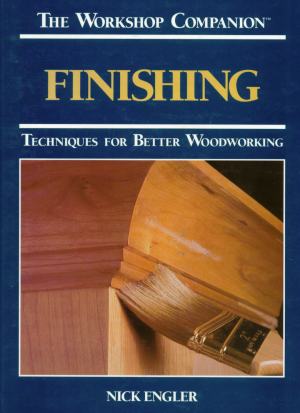|
A good finish can make a humdrum woodworking project look like a million bucks and extend its useful life for decades. A bad finish can ruin even an expertly crafted piece. To get the most out of the hours you spend woodworking, you must be able to properly finish your projects. But how do you find the right finish for each piece from among the myriads of available materials? And once you’ve found the right finish, what equipment and techniques should you use to apply it? In Finishing, author/craftsman Nick Engler untangles this complex subject by dividing the finishing process into easy steps. The book begins with an overview and a brief explanation of finishing chemistry, so you get the big picture before you start out. Then the author walks you through each and every step - choosing a finish, preparing the wood surface, staining, filling, sealing, and various methods of application. Along the way, you’ll find dozens of useful techniques, charts to compare finishes, recipes for finishing materials you can make yourself, and inside information to help you put the best possible finishes on your woodworking projects. More importantly, Finishing shows you practical applications for much of this valuable information. There are complete plans and instructions for popular projects that use many of the finishes covered in the text: • An oak butler’s table is fumed with household ammonia to darken the wood, then protected with hand-rubbed varnish. • A step-back cupboard is covered with old-time milk paint, then its surface is distressed and glazed to simulate an antique finish. • A knife block and cutting board receives a nontoxic finish - the knife block is coated with salad bowl finish, while the cutting board is sealed with paraffin. • A miniature mule chest combines aniline dye and spray lacquer, which is rubbed to a high gloss. • A portable finishing booth helps to protect newly applied finishes from dust while they dry. |
 |
© Collins Woodworkers Guild